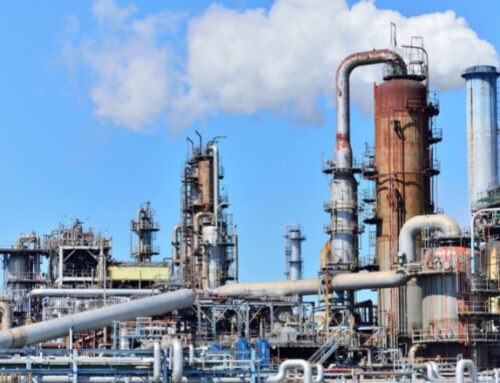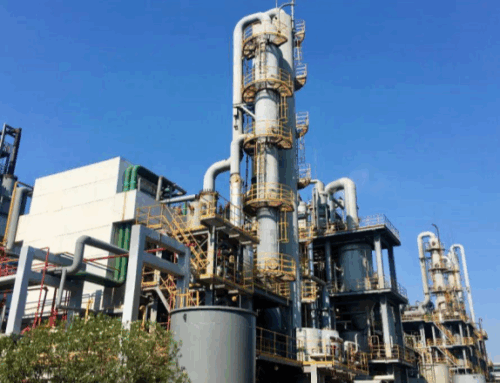As the core process for converting heavy oil into light oil, catalytic cracking is directly related to the efficient utilization of petroleum resources and the production of numerous chemical products. Every advancement in catalytic cracking technology, from the preparation of fuels such as gasoline and diesel to the production of various chemical raw materials, is like injecting a shot in the arm into the petrochemical industry, driving the industry forward. Next, let’s delve into the mysteries of catalytic cracking technology.

1. The core principle of catalytic cracking: the “fantastic reshaping” of molecules
The essence of catalytic cracking is the cracking and recombination of heavy hydrocarbon molecules under the action of catalysts. Heavy oil contains a large number of long-chain and macromolecular hydrocarbon compounds, whose carbon chain length and structural complexity make their physical and chemical properties unfavorable for direct use as fuel or chemical raw materials. The catalytic cracking process is like a magical ‘molecular reshaping magic’.
When heavy oil comes into contact with a catalyst, the active sites on the catalyst surface play a crucial role. These active sites can adsorb heavy oil molecules, reduce the activation energy of the reaction, and enable cracking reactions that originally required high temperature and high pressure to occur under relatively mild conditions. Long chain hydrocarbon molecules undergo carbon carbon bond cleavage under the action of active sites, decomposing into shorter chain hydrocarbon molecules. For example, a longer chain alkane molecule may crack into several shorter chain alkane and alkene molecules during catalytic cracking.
At the same time, the small molecule hydrocarbons produced by cracking will undergo a series of secondary reactions on the catalyst surface, such as isomerization, aromatization, etc. Isomerization reaction can convert straight chain hydrocarbons into branched chain hydrocarbons, increase the octane number of molecules, and thus improve the anti knock performance of gasoline; Aromatization reactions can convert fatty hydrocarbons into aromatic hydrocarbons, which are important chemical raw materials widely used in various fields such as plastics, rubber, fibers, etc. Through these complex and orderly reactions, heavy oil is converted into more valuable light oil products, achieving efficient utilization of petroleum resources.
2. Catalyst: The ‘Magic Wand’ of Catalytic Cracking
In catalytic cracking technology, catalyst is undoubtedly the most critical element, like a magical wand that can cast magic. The performance of the catalyst directly determines the efficiency, product distribution, and product quality of the catalytic cracking reaction.
At present, the widely used catalytic cracking catalysts in industry are mainly zeolite catalysts with Y-type molecular sieves as the active component. Y-type molecular sieve has a unique crystal structure, with a large number of uniform micropores and mesopores inside. These pores not only provide adsorption and reaction sites for reactant molecules, but also play an important role in the diffusion and selectivity of reactant molecules.
The acidic sites of molecular sieves are the active centers for catalytic cracking reactions. The number and strength of acidic sites have a significant impact on the activity and selectivity of catalysts. By modifying molecular sieves, such as introducing different metal ions or performing acid-base treatments, the properties of acidic sites can be adjusted, thereby optimizing the performance of the catalyst. For example, introducing rare earth metal ions can improve the thermal stability and activity of catalysts, enabling them to maintain good catalytic performance even in high temperature environments; And dealumination treatment of molecular sieves can change the distribution of acidic sites and improve selectivity for certain specific products.
In addition to molecular sieves, catalysts also contain matrix components. The matrix mainly plays a role in carrying molecular sieves, providing additional acidic centers, and improving the mechanical strength of catalysts. Common matrix materials include aluminum oxide, silicon oxide aluminum oxide, etc. Different matrix materials and ratios can affect the overall performance of the catalyst. For example, alumina matrix has high mechanical strength and a certain acidity, which can improve the wear resistance and cracking ability of the catalyst towards large molecular hydrocarbons; The silica alumina matrix has good acidity and thermal stability, which is beneficial for improving the yield of light oil.
3. Process Innovation: The Evolutionary Path of Catalytic Cracking
With the development of the petrochemical industry and the continuous improvement of product quality and environmental protection requirements, catalytic cracking technology is also constantly innovating and exploring new “evolutionary paths”.

The riser catalytic cracking process is currently one of the most widely used catalytic cracking technologies. In the riser reactor, heavy oil is rapidly mixed with high-temperature catalyst in a mist form at the bottom of the riser, and then the catalytic cracking reaction is completed in a very short time (usually a few seconds).
This rapid reaction and separation method can effectively reduce the occurrence of secondary reactions, improve the yield and product quality of light oil. In order to further optimize the riser catalytic cracking process, researchers continuously improve the structure and operating conditions of the reactor. For example, by using a new type of feed nozzle, heavy oil can be more evenly dispersed in the catalyst, improving the efficiency of the reaction; Optimize the length and diameter of the riser, as well as operating parameters such as reaction temperature and pressure, to adapt to different raw material properties and product requirements.
In recent years, the combination process of catalytic cracking and hydroprocessing has become a research hotspot. Heavy oil usually contains impurities such as sulfur, nitrogen, and metals, which can affect the activity and lifespan of catalytic cracking catalysts, as well as lead to a decrease in product quality. By hydroprocessing the raw materials before catalytic cracking, most of the sulfur, nitrogen, and metal impurities can be removed, improving the quality of the raw materials.
After hydroprocessing, the raw materials are fed into the catalytic cracking unit for reaction, which can significantly improve the stability of the catalyst and product quality, while reducing pollutant emissions. For example, the hydrocracking catalytic cracking combined process can produce clean fuels with low sulfur and low aromatic hydrocarbons, meeting increasingly stringent environmental standards.
In addition, the catalytic cracking process for producing more low-carbon olefins is also a current research focus. Low carbon olefins such as ethylene and propylene are important chemical raw materials, and market demand continues to grow. By optimizing the catalytic cracking catalyst and process conditions, such as using catalysts with special pore structures and acidic properties, and adjusting parameters such as reaction temperature and catalyst oil ratio, the yield of low-carbon olefins can be improved. For example, some new catalytic cracking processes can increase the yield of propylene to over 20%, providing more high-quality raw materials for the chemical industry.
4. Future Outlook: The ‘Star Ocean’ of Catalytic Cracking
Looking ahead to the future, catalytic cracking technology will continue to develop in multiple aspects, exploring a broader “star sea”.
In terms of catalyst research and development, with the continuous progress of materials science, the development of new catalysts will become a key focus. For example, catalysts based on nanotechnology are expected to achieve more efficient catalytic performance. Nanomaterials have high specific surface area and unique physical and chemical properties. Applying them to catalytic cracking catalysts can increase the number and distribution uniformity of active sites, improve the activity and selectivity of the catalyst.
In addition, developing more environmentally friendly catalysts is also a future development direction. By using renewable raw materials or reducing pollutant emissions during catalyst preparation, the environmental impact of catalytic cracking processes can be reduced.
In terms of process optimization, intelligent and digital technologies will be deeply integrated into catalytic cracking processes. By establishing advanced process control models and real-time monitoring systems, precise control of catalytic cracking units can be achieved. By utilizing big data analysis and artificial intelligence algorithms, reaction conditions can be automatically optimized based on the properties of raw materials and product requirements, improving the operational efficiency of the device and the stability of product quality.
At the same time, further exploration of new reaction mechanisms and process routes, such as combining supercritical fluid technology, plasma technology, etc. with catalytic cracking, may open up new catalytic cracking process paths, achieving higher petroleum conversion efficiency and product added value.
Against the backdrop of global energy transition, catalytic cracking technology will also face new opportunities and challenges. With the increasing demand for clean energy and sustainable development, catalytic cracking technology needs to constantly innovate to adapt to the new energy landscape. For example, researching how to apply catalytic cracking technology to the conversion of renewable resources such as biomass oil and waste plastics, providing technical support for sustainable energy supply; Meanwhile, by optimizing the process, energy consumption and pollutant emissions can be further reduced, achieving the green and low-carbon development of catalytic cracking technology.
Catalytic cracking technology, as one of the core technologies in the petrochemical industry, has achieved significant development in the past few decades. From core principles to catalyst research and development, from process innovation to future prospects, catalytic cracking technology is constantly exploring and advancing. With the continuous innovation of technology, catalytic cracking will play a more important role in the efficient utilization of petroleum resources, production of chemical products, and response to global energy transition, contributing greater strength to the sustainable development of the petrochemical industry.
Article source: www.xianjichina.com
M&J International Trading Co., Ltd





